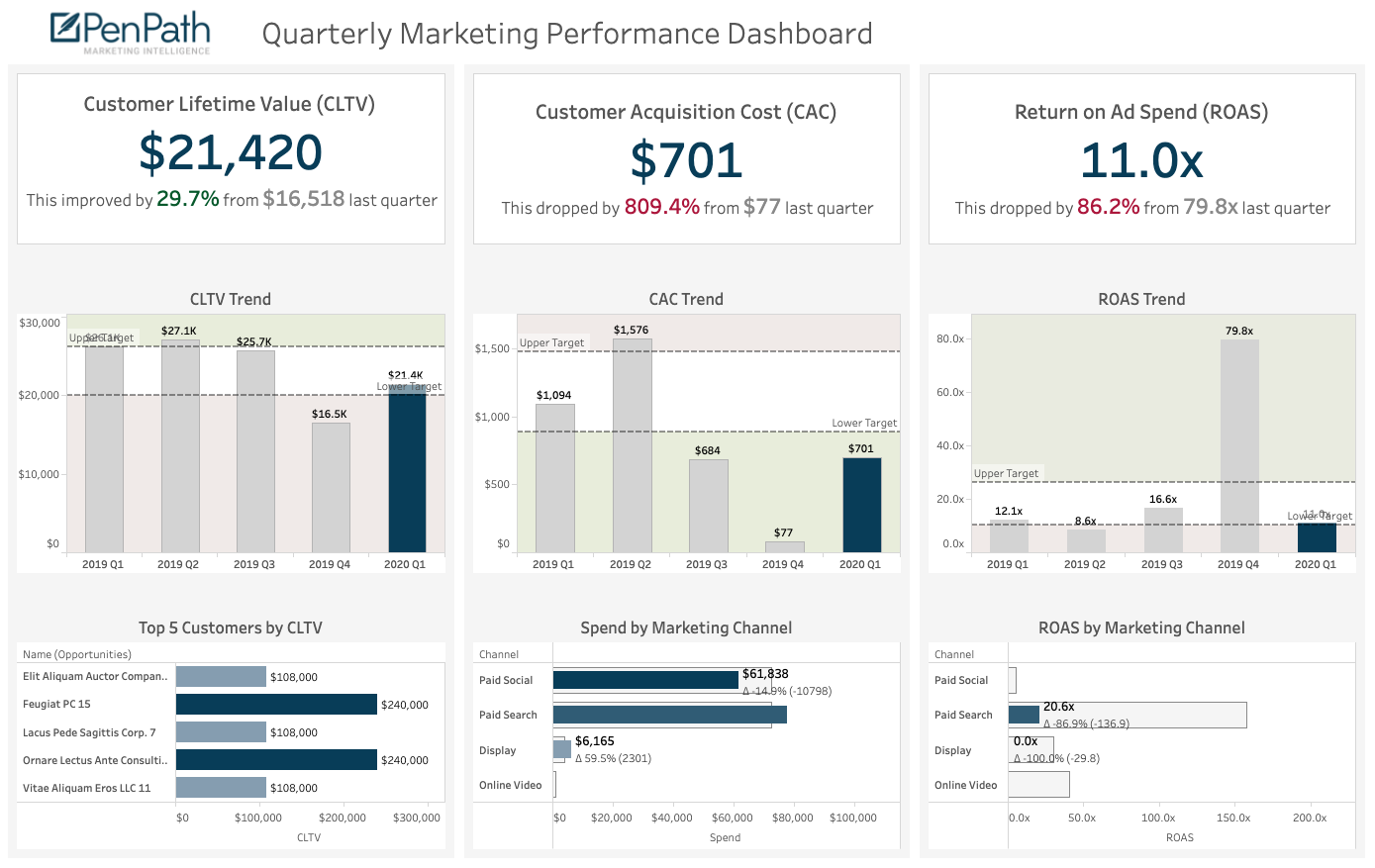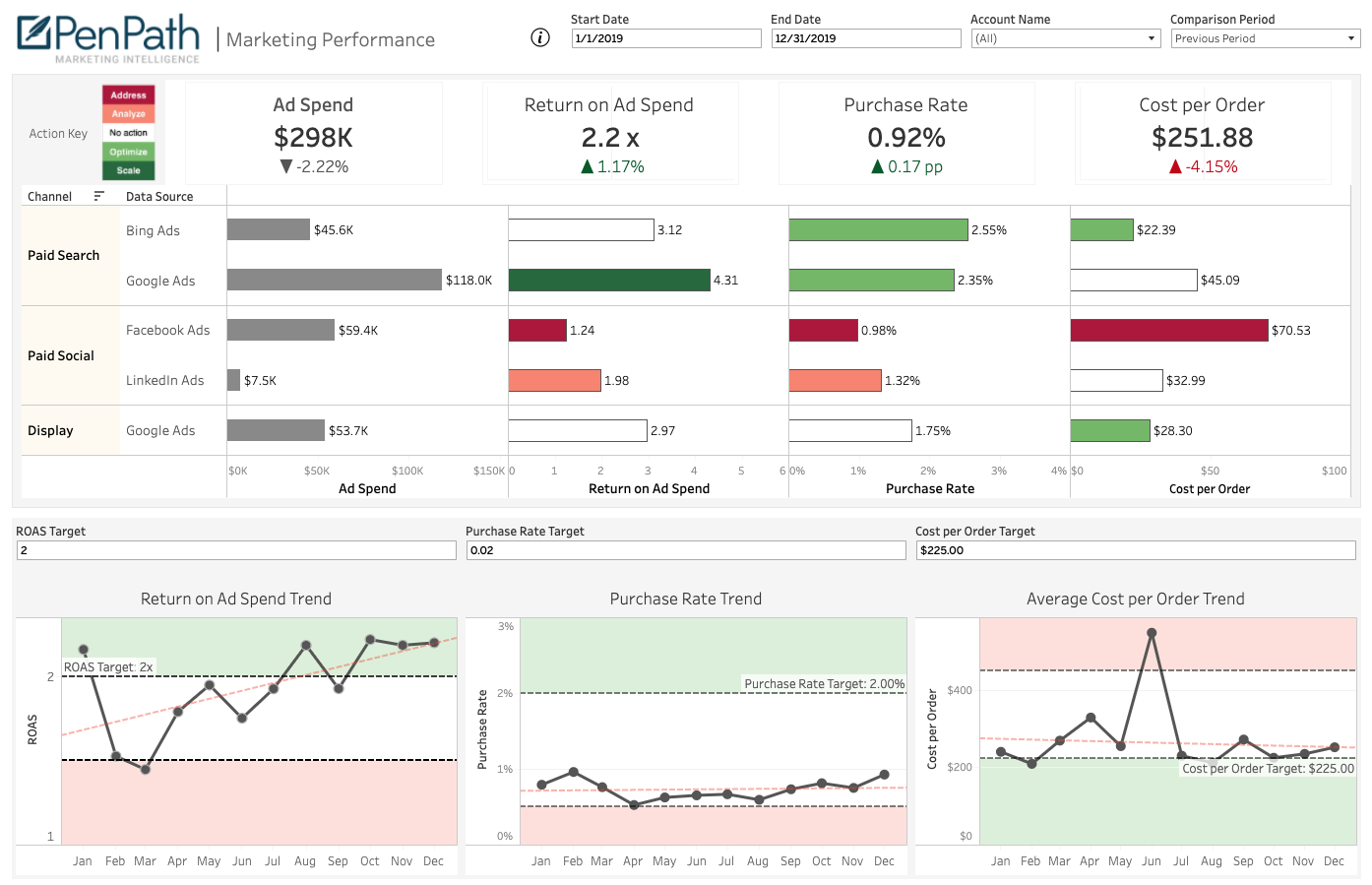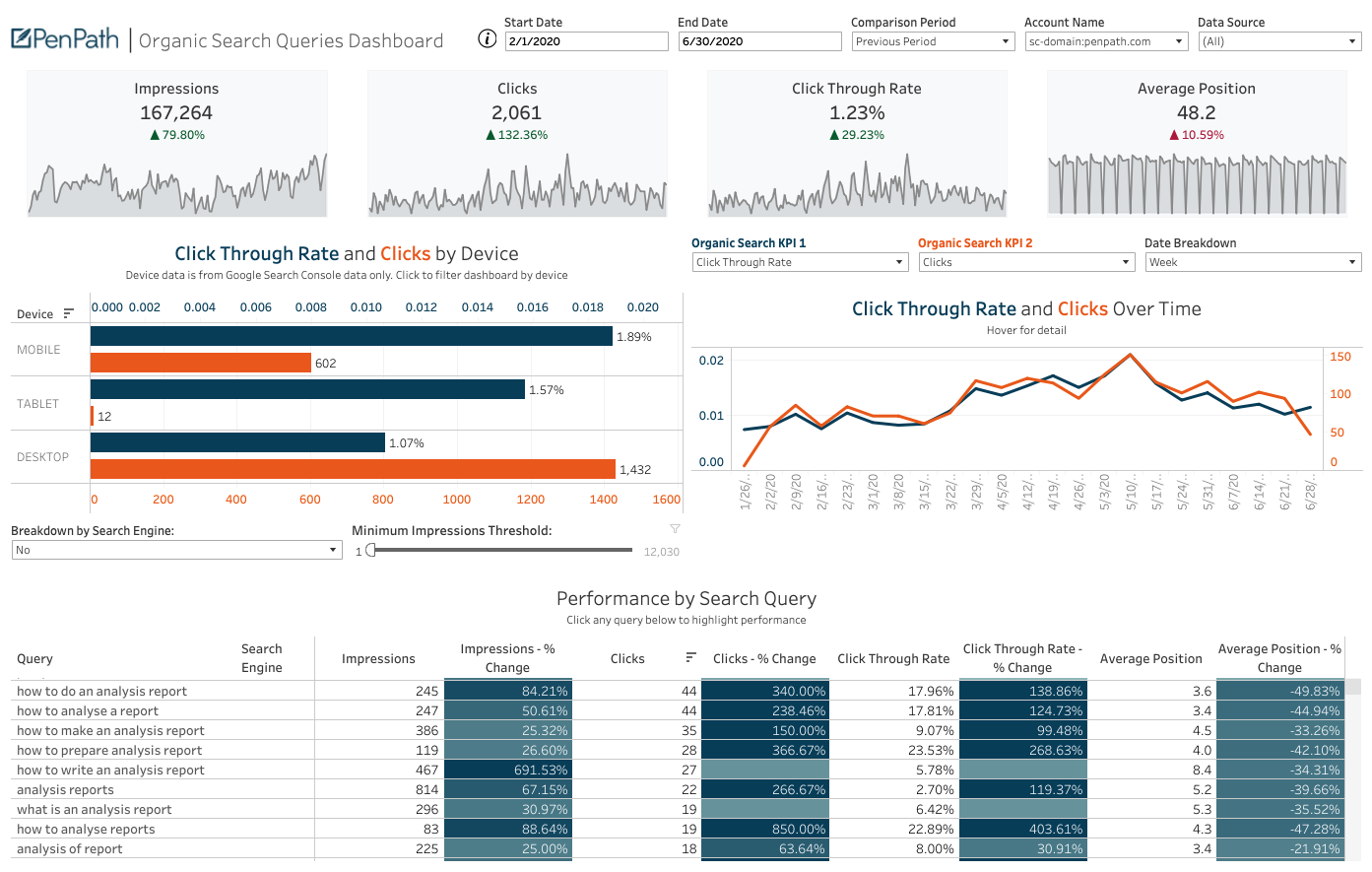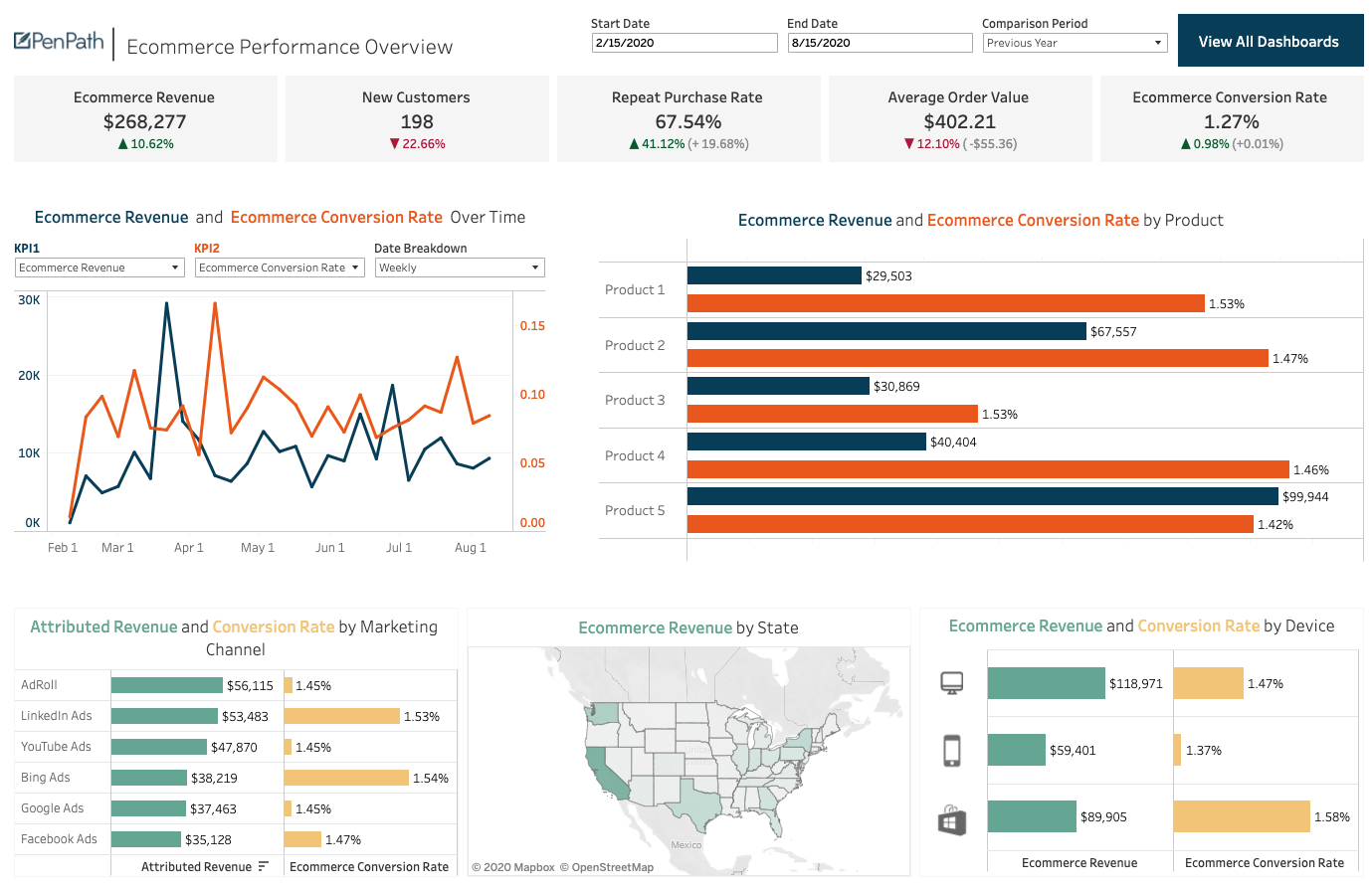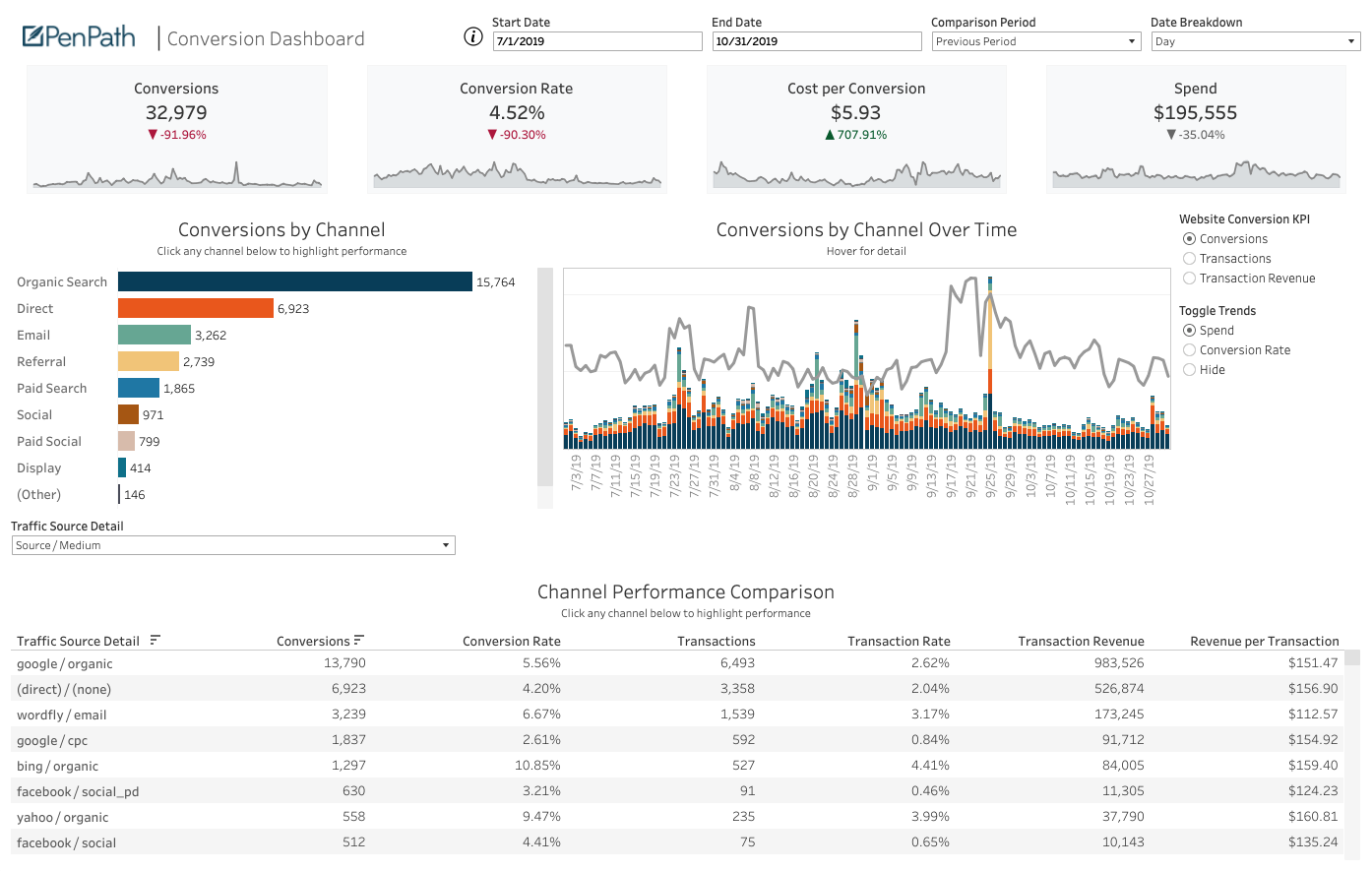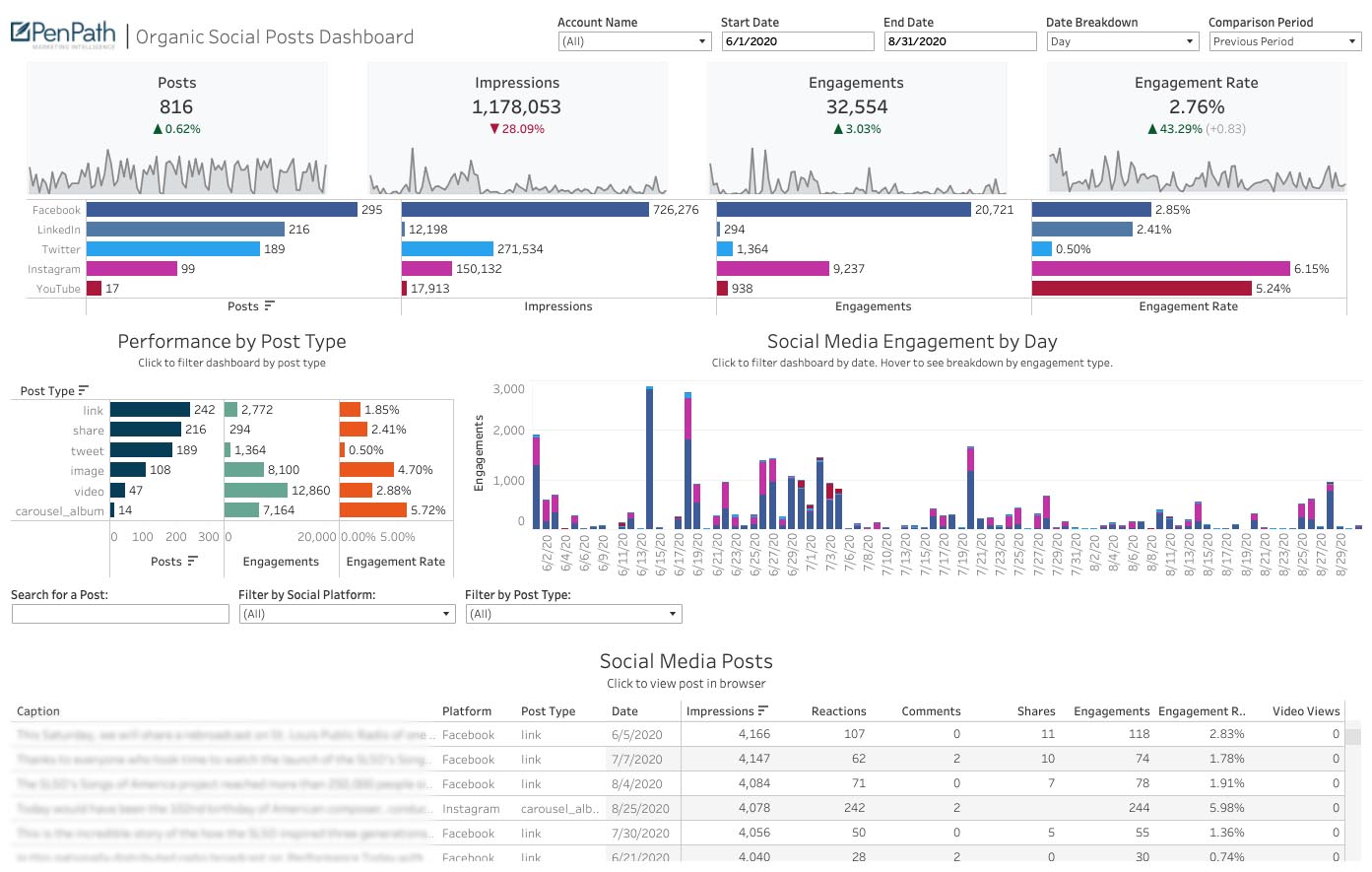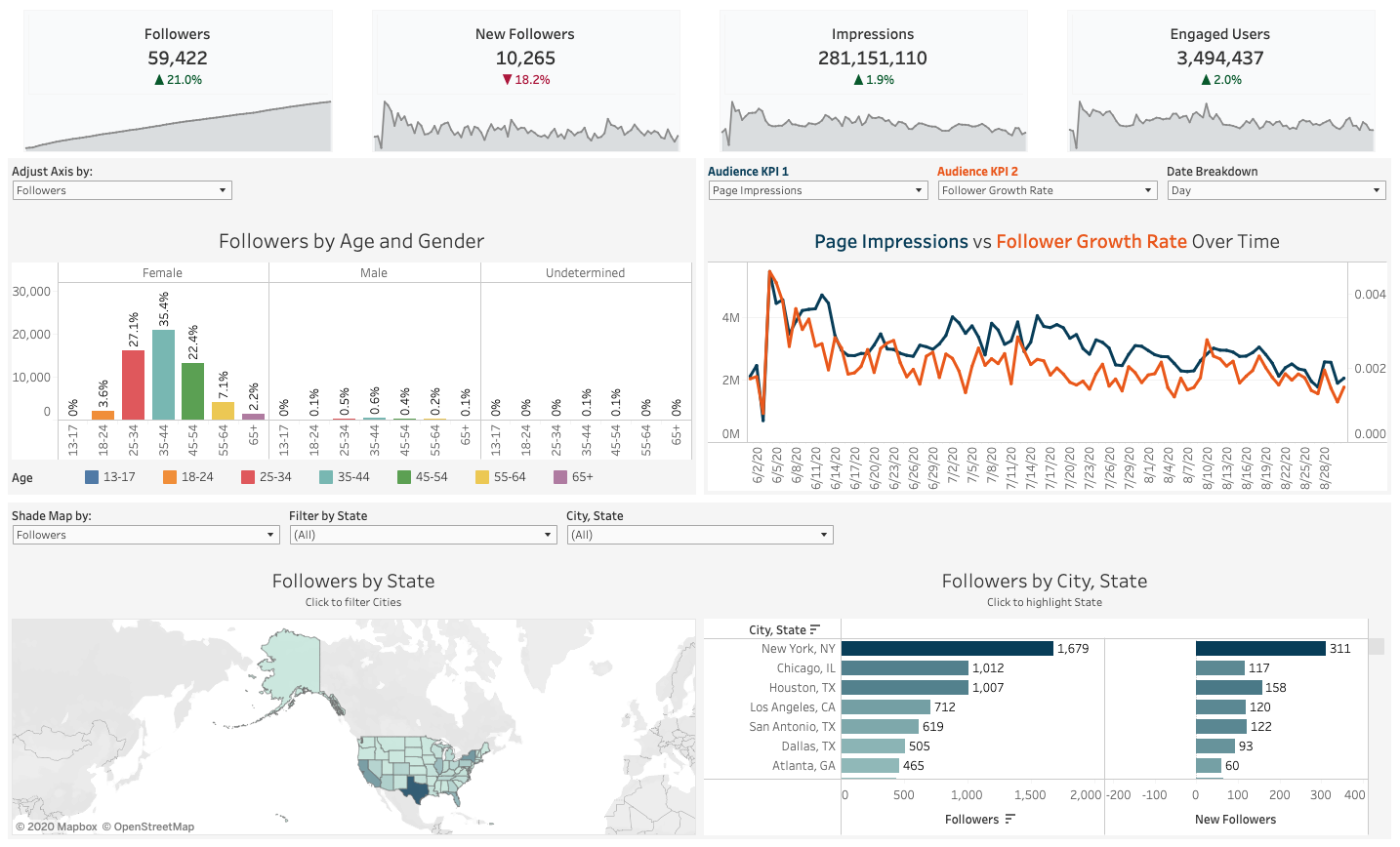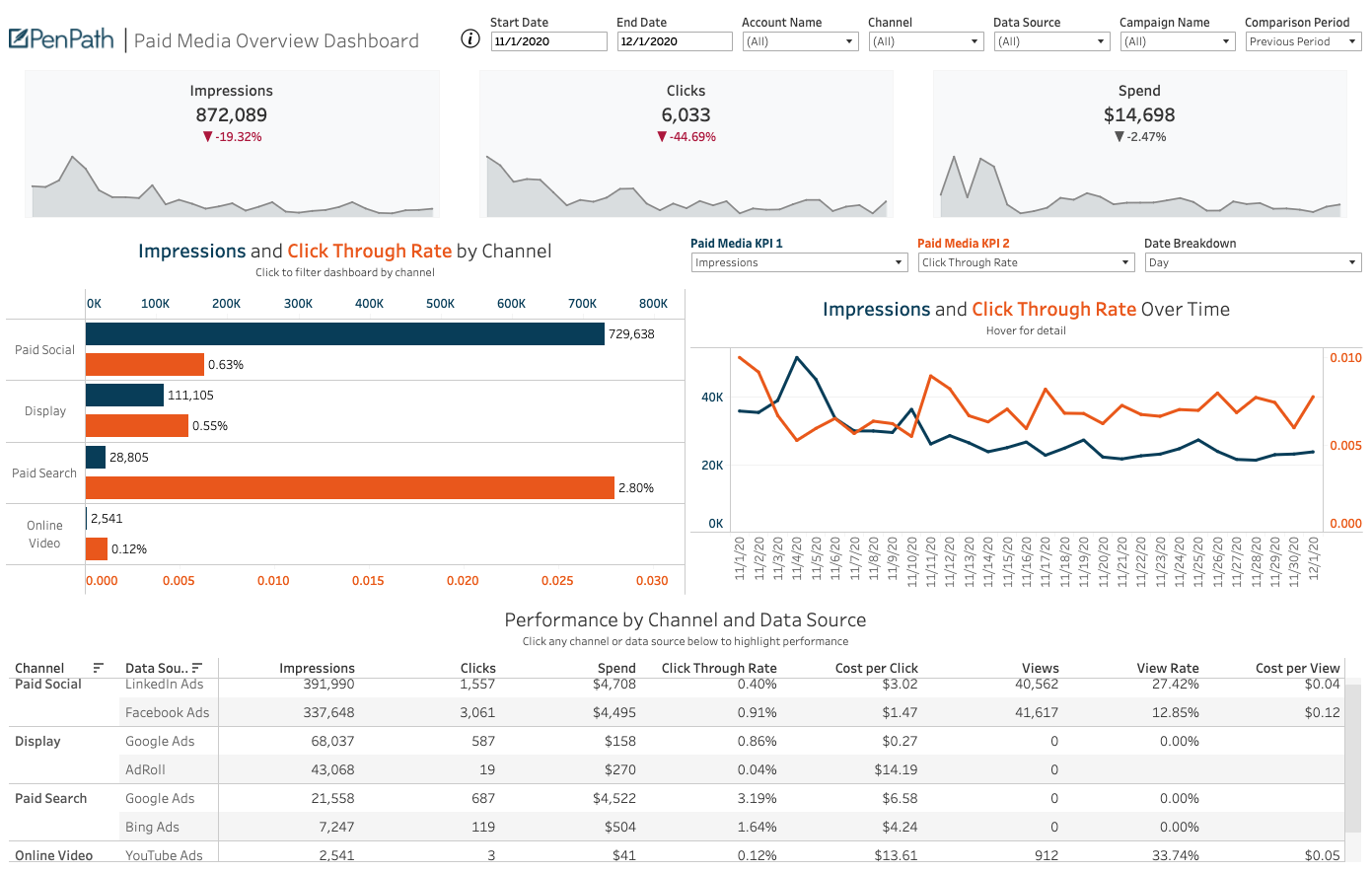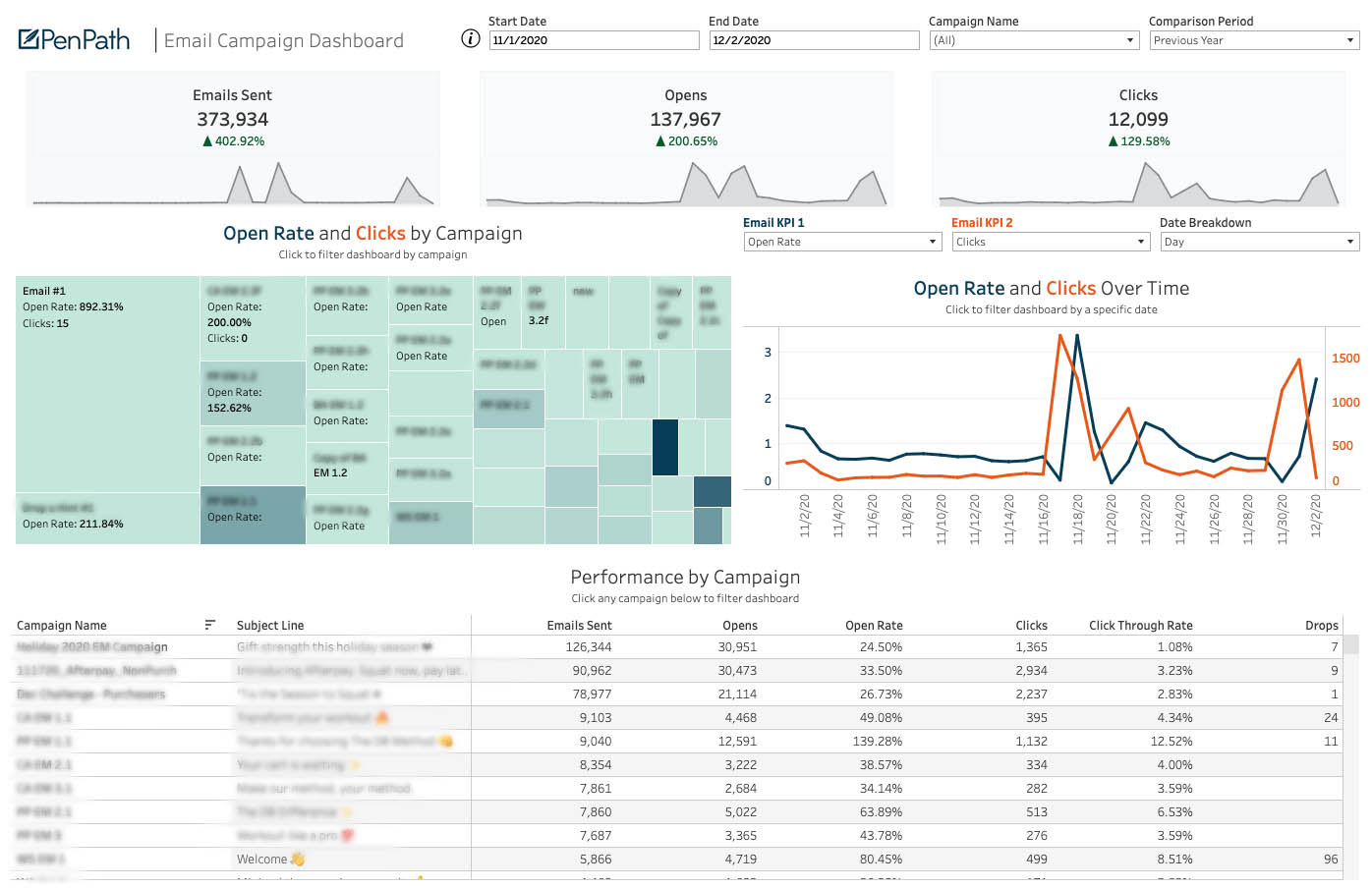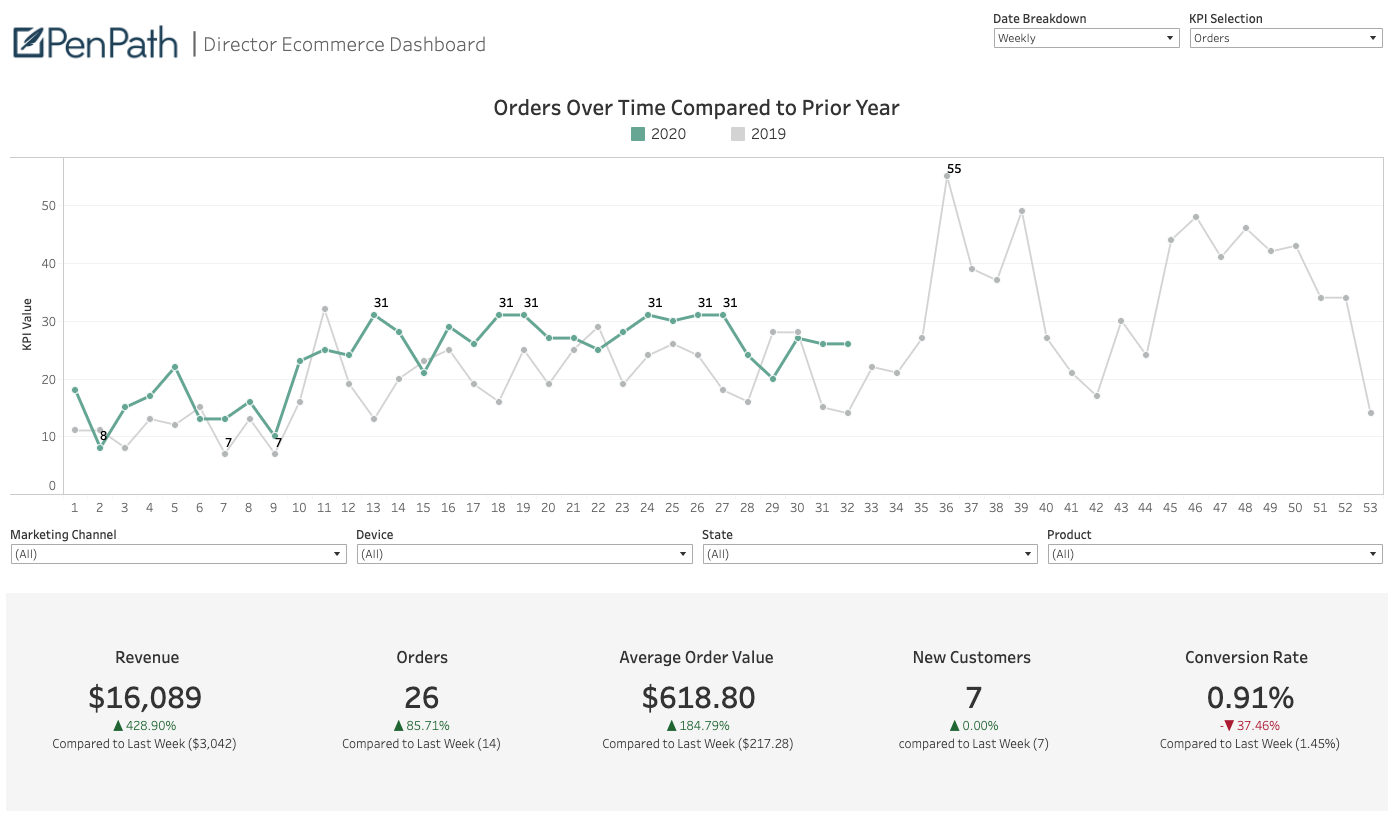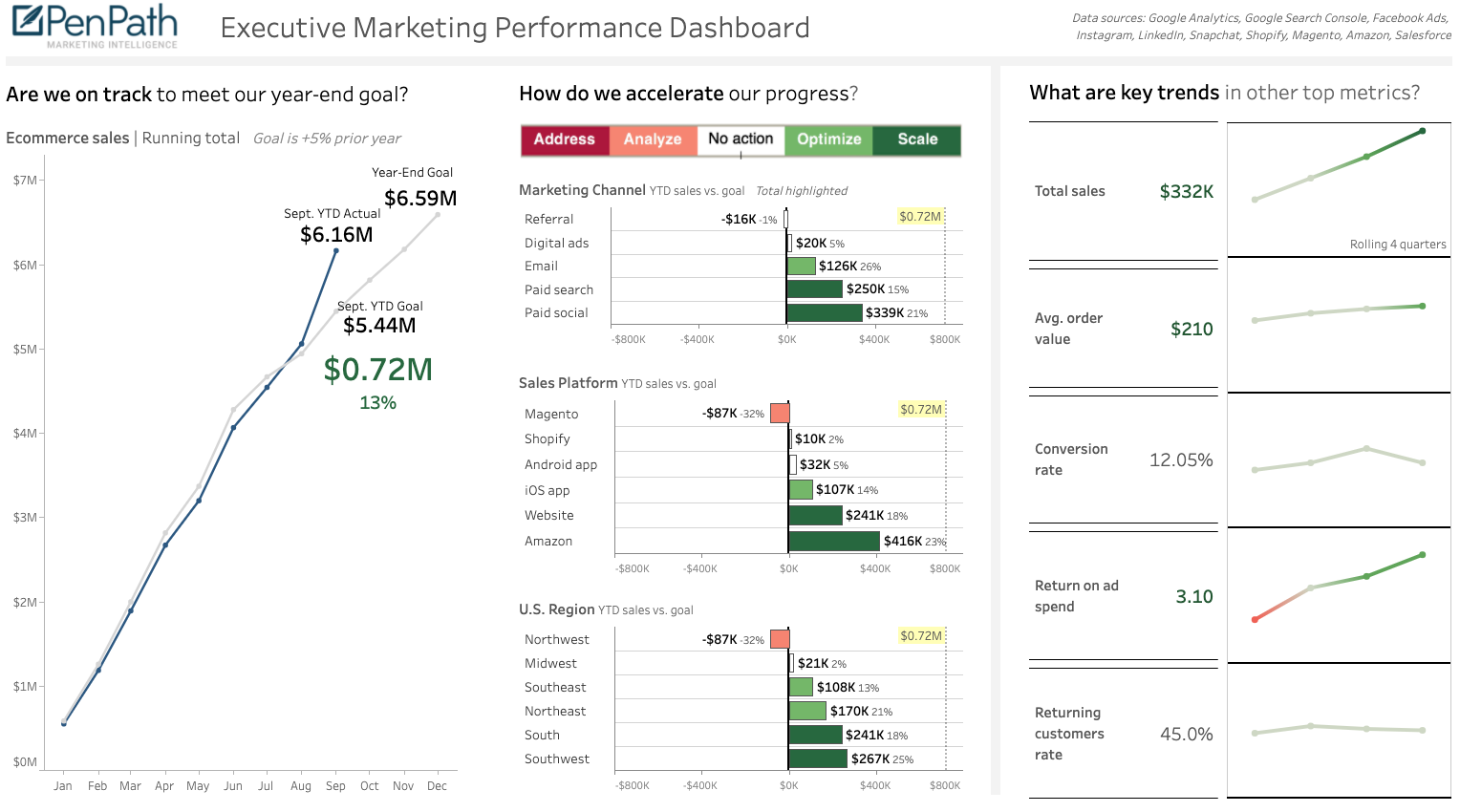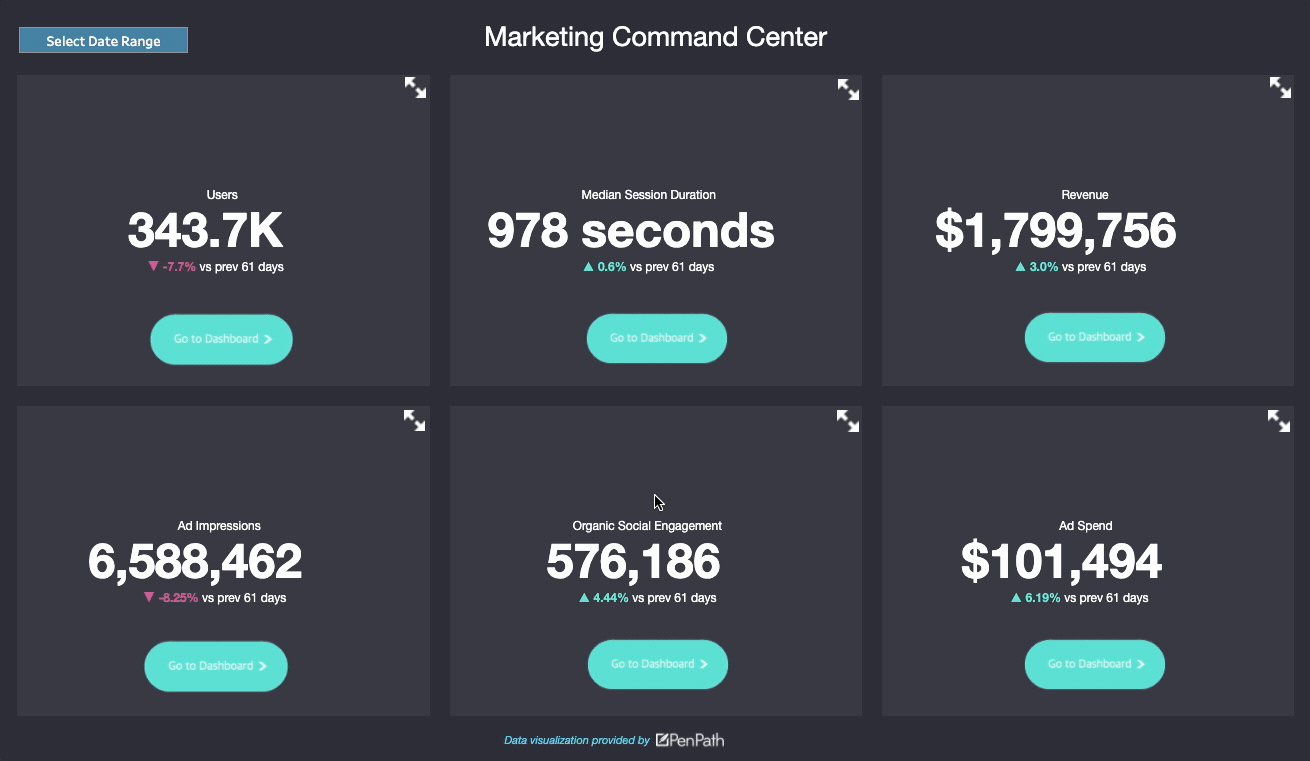Social Media Dashboard
Social Media Dashboards are some of the most advanced dashboards that PenPath offers. They can help you spot the correlation between social media activity and site engagement.
Two types of social media dashboards are Organic Social Media Dashboards and Paid Social Dashboards. Both have similar insights and aggregations.
Paid Social Dashboards show such insightful KPI as total advertising spend across social platforms like LinkedIn, Facebook, Instagram, Snapchat, and TikTok.
Organic Social Media Dashboards tend to be very valuable because they only include the metrics a marketing professional would care about. Such dashboards can be aggregated across all social networks and replicated by each social network in a more usable and less bloated format.
PenPath offers a variety of services in this respect. Social Media Dashboards can pull comment data, store fleeting data to better see performance over time, do overall sentiment analysis for more advanced analytics aggregated metrics, such as total follower growth, total impressions, and total engagements. Content evaluation is available to see what kind of content performs well, such as comparing a video’s performance to images.
Social media marketing is one of the most important aspects of an online campaign, so being able to assess the effectiveness of these marketing efforts is very useful.

